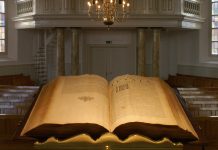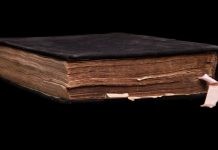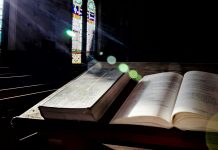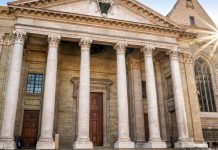Tag: protestant reformation
Did Martin Luther really believe in Sola Scriptura?
For ten years Luther read the Bible twice a year. His first Bible was so thoroughly read that he "knew what was on every page and where every passage was found." Martin Luther is the most prominent name among those who brought about the Reformation and took Bible study to a new level.
Henry’s domino effect
In his desire to secure an heir to the throne, Henry VIII set off a domino effect that would ultimately change the face of America and the world.
The theological masterpiece of the Reformation
Written in Latin by a 26-year-old Frenchman in less than a year, it is a book of 516 pages. Published in Switzerland and dedicated to the French king from whom he was fleeing, it is the most important theological work of the Reformation.
The Waldenses | The poor of Christ
The “poor of Christ”, the “poor of Lyon” or, simply, the “brothers” never called themselves “Waldenses” until they joined the Reformation. The derisive appellative was given to them by their persecutors, after the name of the man who consolidated the doctrine of the community.
The Ecumenism Files III: From the Reformation to Postmodernity
The dialectical spirit of ecumenism gives rise, among other things, to a question whose full answer is still awaited: How is it that the critical spirit and rationalism of Enlightenment origin, combined with making the Bible available to ordinary people, has led to so many schisms?
The forgotten book
Almost 500 years have passed since the 1524 publication of the work that one prominent leader of the 16th-century Protestant Reformation, Andreas Karlstadt, wrote in defence of the Sabbath doctrine.[1] It was the first work on this subject written by a leader of the Reformation.
Pietism within the Protestant Reformation
Pietism was a movement of spiritual revival that took place between the seventeenth and nineteenth centuries mainly in Germany and Bohemia.
The Dutch Arminians
On the continent jaded by an irrelevant religion, a new denomination appeared, in addition to the Lutheran, Calvinist, and Anglican Protestants—the Arminians.
The Methodist Church | Methodism in search of holiness
The Methodist Church emphasised practical sanctification and mission, these aspects being necessary in contemporary Christianity as well.
The teachings of John Calvin | Calvinism
In 2017, on the occasion of the 500th anniversary of the Reformation, the French publication La Reforme conducted a survey to find out what people knew about two famous personalities of Protestantism: the German Luther and the Frenchman Calvin. To the amazement of the initiators, the study showed that Luther’s name was much more familiar to the French than that of their compatriot, John Calvin.
Puritanism in the Protestant Reformation
Less than 50 years after the supporters of Martin Luther’s ideas in Germany were mockingly called “Lutherans,” England was in its turn discovering a derogative nickname—“Puritans”—which it applied to a category of Christians who disturbed the ordinary life of the English church and society.[1]
The Pentecostal movement: Pentecostalism and the Reformation
Pentecostalism has its origin in the Greek word Pentecost, which means “fifty” and refers to the receiving of the Holy Spirit by the apostles on the feast of Pentecost in Jerusalem, followed by speaking in tongues (glossolalia). However, this Pentecostal phenomenon predates the Pentecostal movement which began at the beginning of the 20th century.
The Anabaptist creed: The price of the Reform carried to the end
The Anabaptist creed emphasised the premise that Bible truth was accessible even to secular readers and listeners, who had a rudimentary education.
The Protestant Reformation: The river that runs through the whole earth
The Protestant Reformation was a tumultuous river, the flow of which began to become visible in 1517. A significant contribution to this eruption was made by its tributaries, the (pre-) Reformation movements: the Waldenses, Albigensians, Lollards, Hussites, etc.—true springs of the main Protestant current, which took over their force in its flow through history.
How (not) to clip the wings of reformation
In the fourteenth and fifteenth centuries, Europe was hit hard by several disasters, the proportions of which are difficult to imagine today.


























